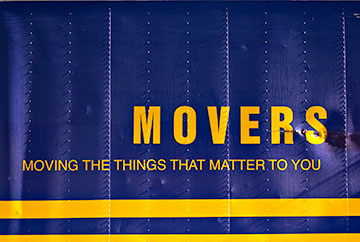I just finished an interesting project extracting still frames from a training video I did for BP in 2007. The “shots” were needed for a print piece, and fortunately were all of a very small size. Once exported as stills from Final Cut, post-processing the frames was pretty simple. However, at 720 x 480 pixels, the quality of standard NTSC video frames is very low resolution by still photo standards. After being de-interlaced and tweaked in Photoshop, the images are only just good enough to be used at very small sizes in print.
I was reflecting on how very different the situation would have been had the original footage been captured today. In the last year, high definition video cameras have become common. Most will produce a frame grab that is generally acceptable for many small print applications. Granted, there are other limitations to the camcorder form and function from a still photographer’s point of view, but the images can work in a pinch.
Enter the current crop of DSLRs with HD video capability, in particular the Canon 5D Mk. II and Nikon D90. These cameras capture high-quality HD video, and high resolution still images as well. There are some compromises, but both cameras represent what the big manufacturers obviously perceive as a growing demand for both still and motion capabilities in the same platform. The jury is still out on the prescience of their vision, but for now many wedding and event photographers are in hog heaven.
There have been reports of some disappointment in the 5D Mk.II, especially after all the pre-release hype. But the camera does a respectable job (when fitted with a good external mic,) and if used cleverly can do things you could never accomplish with even the best camcorder. In particular, the ability to use high-speed lenses on a big frame for selective focus effects. It just can’t be done with a sensor the size of your fingernail.
And then there’s the soon-to-be-released Red Scarlet. Here we have a super-configurable system that can produce extremely high resolution images at rates up to 100 frames per second! And it’s beautifully modular – pick a “brain,” batteries, grips, viewers, even high-end lenses. This may prove to be the ultimate in still/motion camera convergence.
But what’s it mean to old-school types like me? I think it’s terrifically exciting to see technology pushed to the extreme. Do I want to try out a Red Scarlet? You bet I do! But would I buy one? In a word, no. Price is certainly a consideration, but this is state-of-the-art gear we’re talking about here and “the best” is often the best investment. And while not inexpensive, a Scarlet system could be pretty competitive considering its impressive capabilities. I’m just not hired enough to produce video or shoot high-speed action to make it pencil out. And with rental units likely to be available, I’m covered.
However, anyone who shoots mainly video will probably be wowed, and possibly in a big way. Red is the company that took the Hollywood movie production world by storm a few years back with the now-famous Red One. Sports and action photogs should love the Scarlet. Wedding and event shooters (who are increasingly expected to provide both stills and video) could find it interesting too. My son Nate, both a photographer and videographer, thinks it’s totally sick (his words.)
And I think that’s the hingepin in this whole convergence idea. People in his generation were raised on video. For them, it’s the default visual medium. So it’s fitting that the latest technology should offer up tools that cater to the most “current” thing. I think by the time Nate and his colleagues reach their mid-career points, they will be working routinely in both still and motion formats. They will value the ability to do both on the same, familiar platform.
Today, some photographers are wary of embracing the inclusion of motion capture capability into the professional’s toolbox. But it appears more and more that this is the wave of the future. Back in the late 1700s, Thomas Paine said, “Lead, follow, or get out of the way.” Better watch your back!






